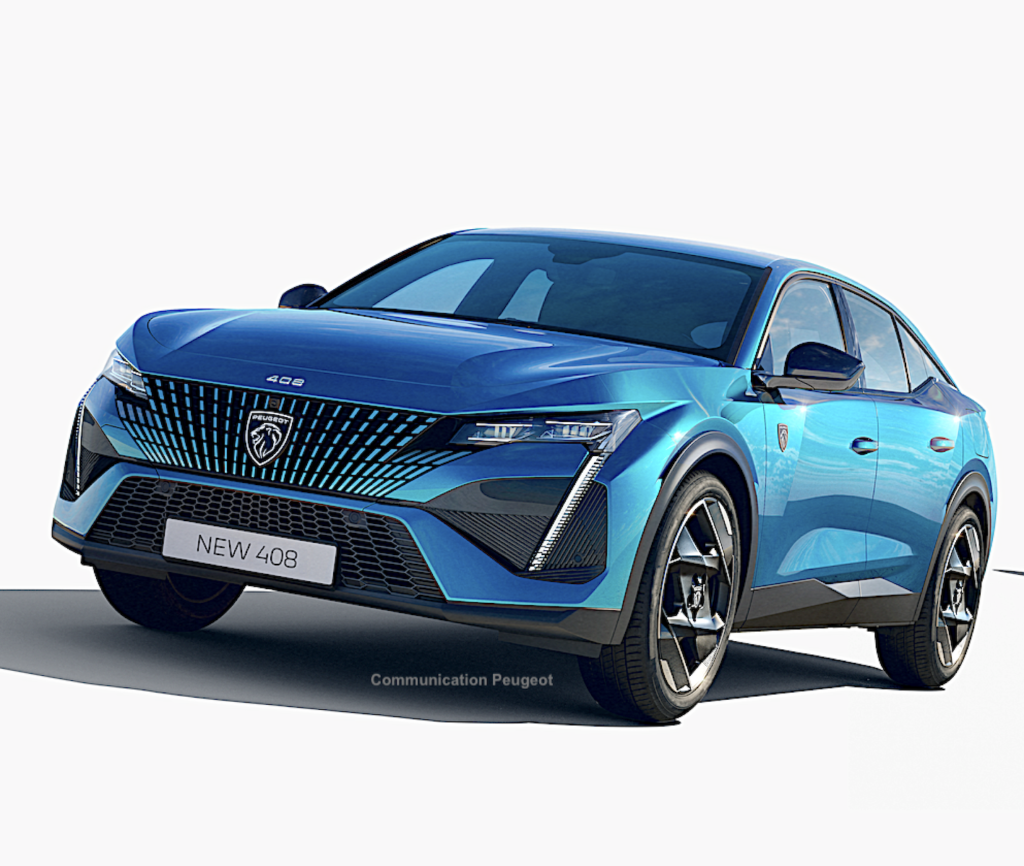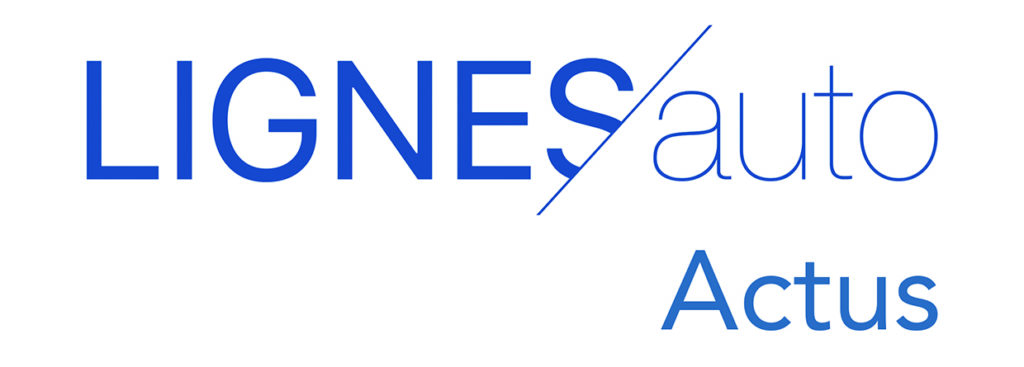
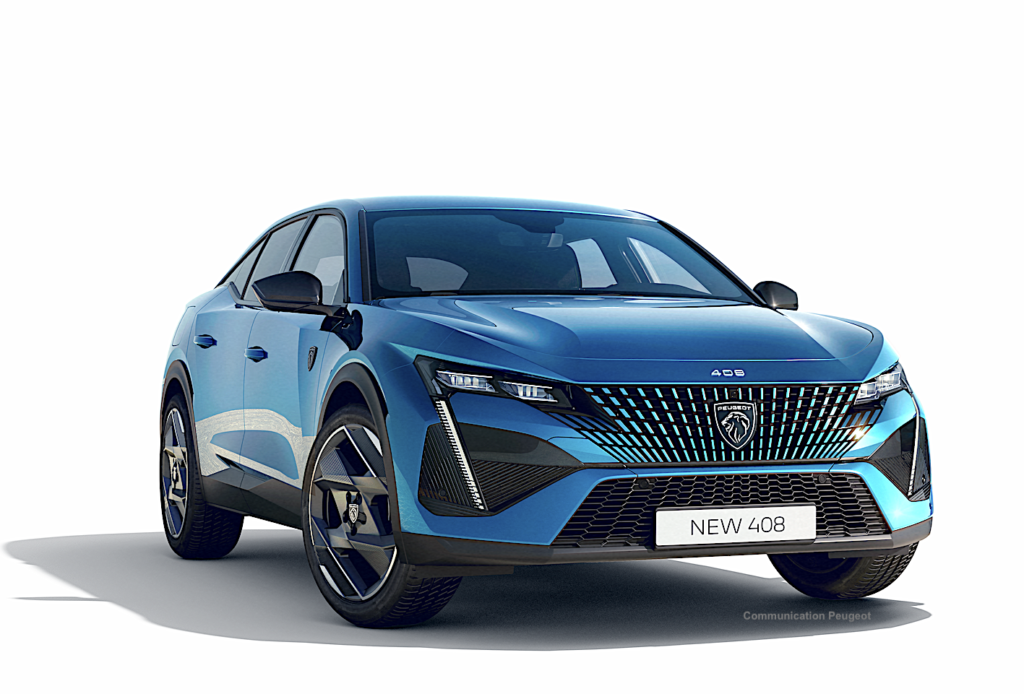
You are about to discover the style of the new Peugeot 408 in all its details. This new model is a new offering in the range. It is not, as we imagined, a 3008 coupé, but according to Peugeot, a “fastback”. This silhouette is part of the P5 programme launched in the second half of 2018.
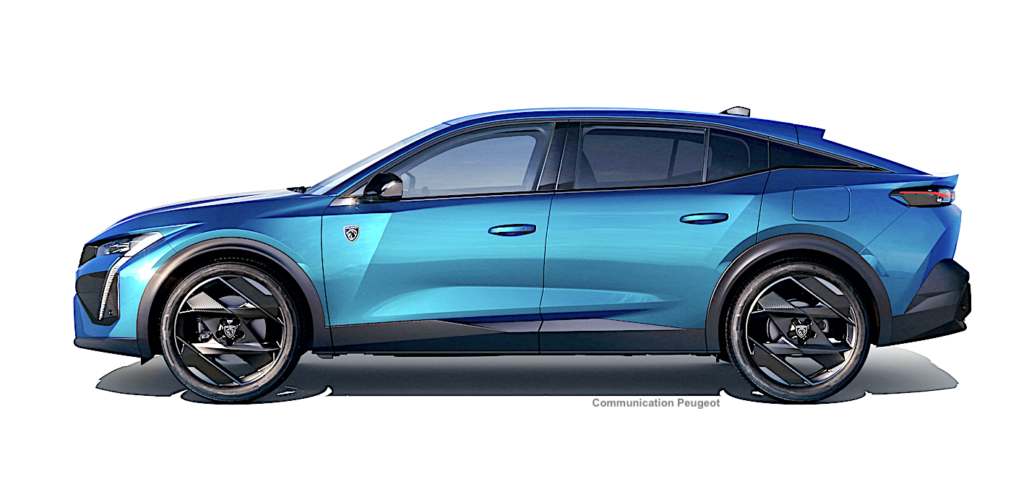
From the outset, this programme included the P51 (308) estate, P52 (308 SW) and P54 (408). Pierre Paul Mattei (Project Design Director) explains that “throughout the P5 programme, we were in co-design mode, i.e. when we designed the headlamp of the 308 or its rear lights, we made sure that they were appropriate for the style of the 408. We established a sort of ping-pong between the creative teams throughout the development of these three silhouettes.“
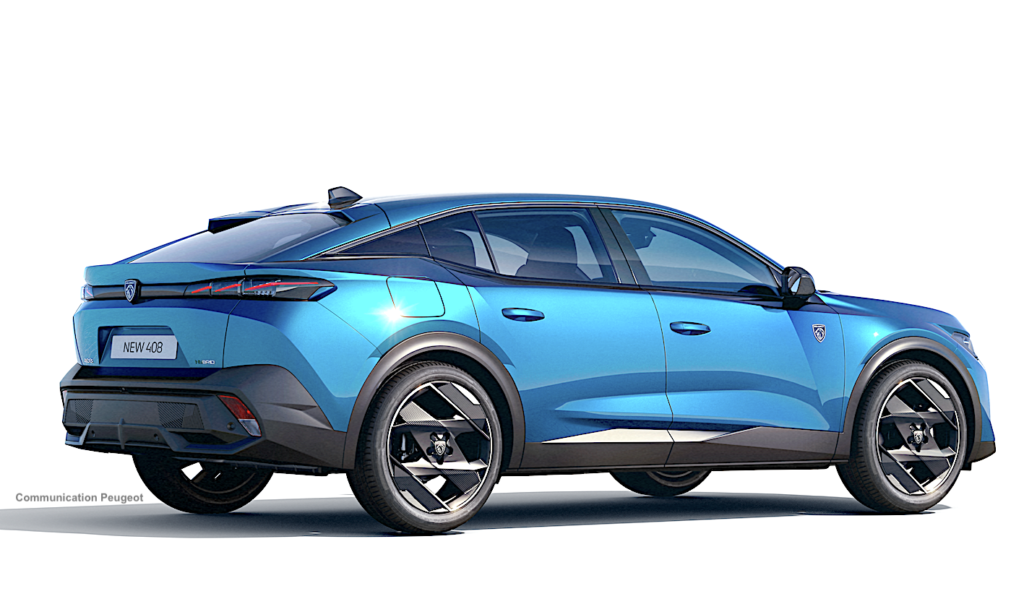
First of all, let’s put this new car into context (below) where we can see very clearly that the 408 is much lower than a 3008 and is closer – in length – to the 508. To better position this new 408, we need only consider its name, as Pierre-Paul Mattei explains: “the double zero has been eliminated from the outset, as it is linked to the SUV silhouette. Unlike an SUV, the driving position of the 408 is rather like that of a sports saloon! What’s more, when you’re driving it, you’re not in the SUV world at all.“
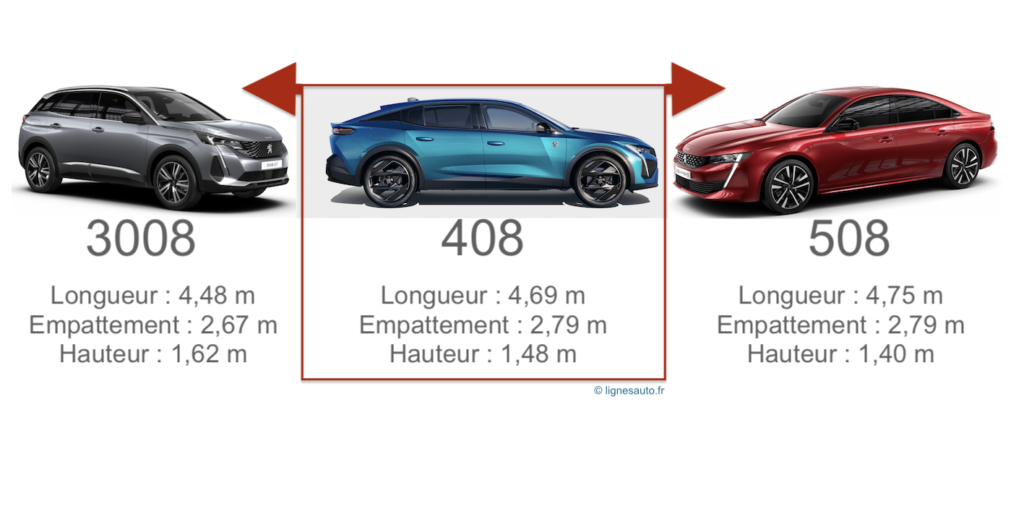
To buy our quarterly design magazines, our beautiful books and our “automotive chronicles”, go to: https://lignesautoeditions.fr
To understand the design of the 408, we must first mention its technical platform (see dedicated topic). This new Peugeot is based on the EMP2 V3 platform inaugurated by the DS4, then used by the 308 saloon and estate, the Opel Astra with these two silhouettes and by Citroën for its large sedan C5X. From this “shelf” where several wheel sizes and technical dimensions are available, Peugeot has chosen the longest wheelbase available for its 408, that of the C5X (2.79 m) and has also borrowed the large 72 cm wheels, those which were refused to the 308 saloon and estate. On the other hand, the latter benefits from an intermediate wheelbase: 2.73 m compared with 2.67 m for the 308 .
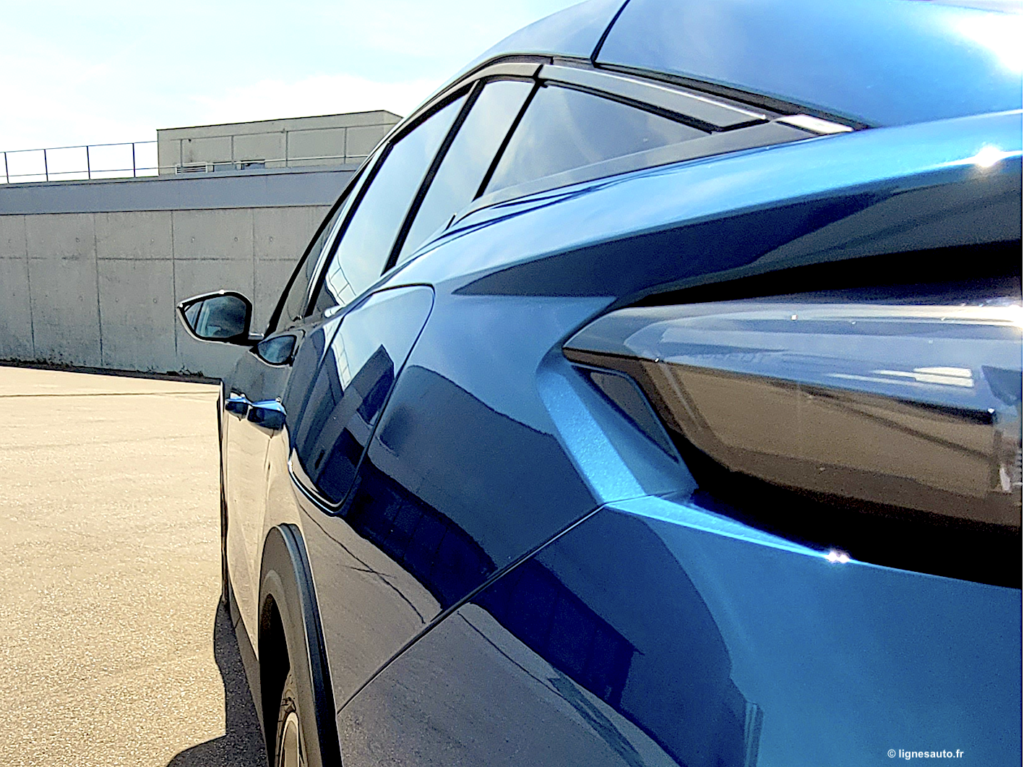
This Meccano® allows for several car sizes and personalities with, for example, the large wheels on a DS4 based on the short wheelbase. Despite its size (4.69 m), the 408 is considered to be a “C” segment vehicle (308, Mégane, Golf…). Peugeot explains “that the 408 is positioned at the top of the range of C-segment.” The manufacturer, like Citroën with its C5X, has opted for a generous second row (the car will also be produced in China, where customers are keen on good interior space, in spring 2023) and a large boot volume.
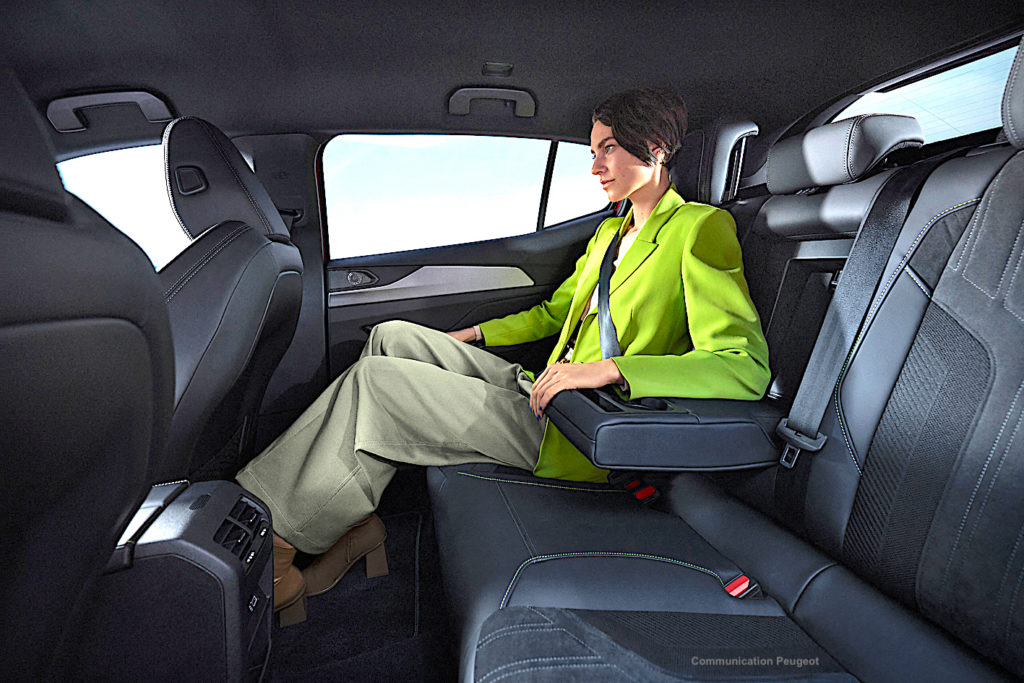
The proportions evoked by the 2015 manifesto (see dedicated topic) have been completely rethought with a roof that remains flat to the rear of the second row seats, and an overhang of almost one metre that benefits the boot volume. With these constraints, the designer Kevin Goncalves – who designed the silhouette of the 308 SW estate and the 208 – and the team led by Pierre-Paul Mattei and Matthias Hossann, had to use some rather effective subterfuges to visually erase the rear overhang.
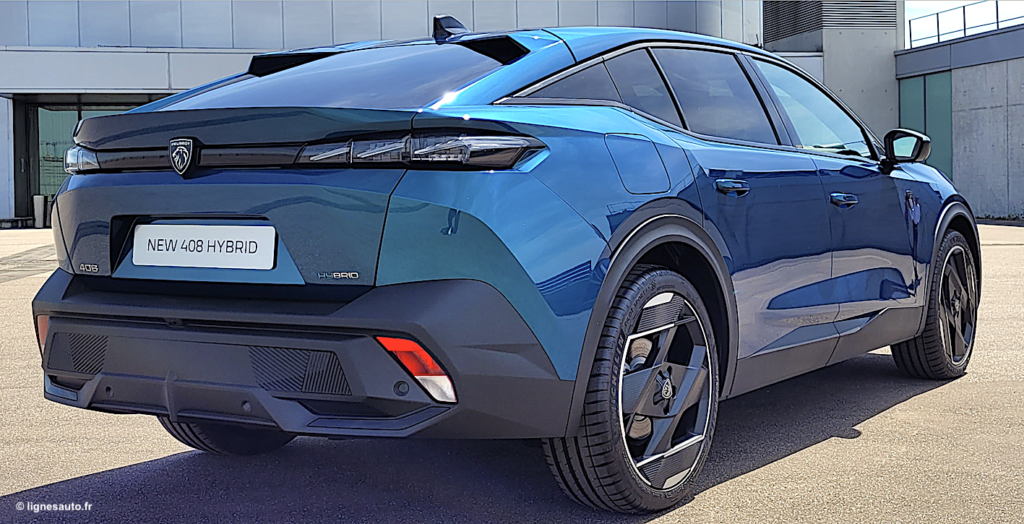
Pierre-Paul Mattei says, “The rear end construction with its bumper is something that cannot be imagined on a classic silhouette. The reason we came up with this solution is that a classic design didn’t work on this car. There are a lot of overhangs, and the trunk is 10 to 15 cm higher than a normal trunk. So we had to deal with a mass that had absolutely nothing to do with a classic sedan. It was necessary to bring in a number of styling breaks to hide it and make it attractive and dynamic. In the end, the whole rear end is arrow-shaped.”
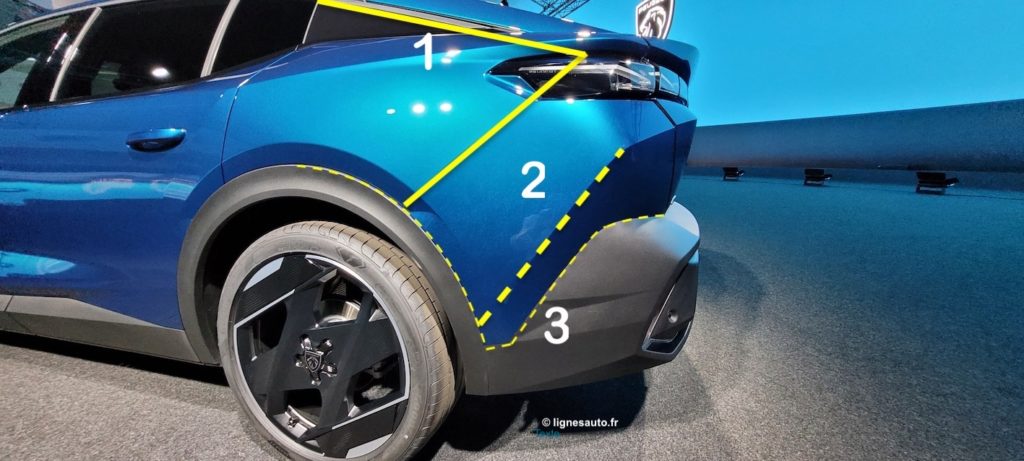
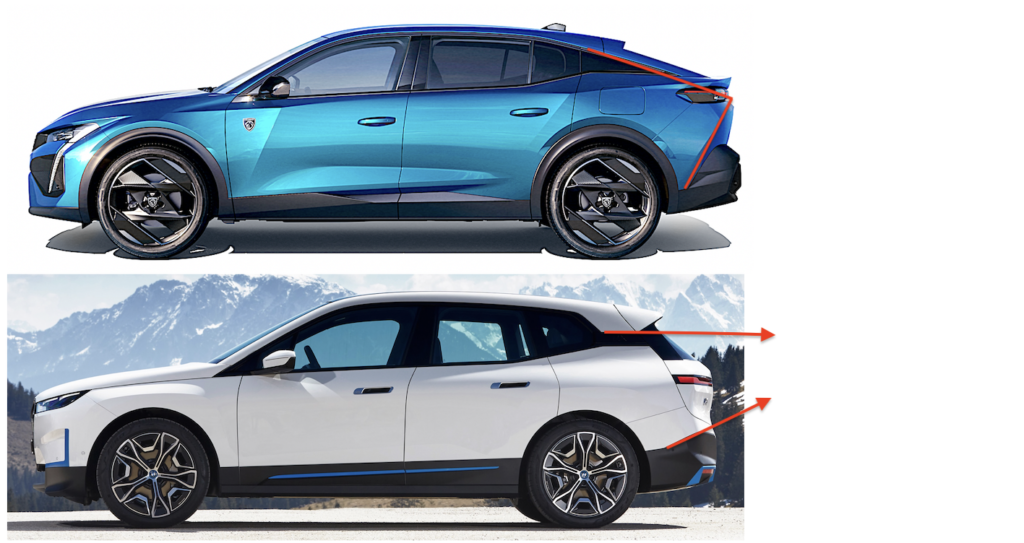
At the front, the design had to take into account the wider track than on the 308 . However, as the windscreen bay is identical, the widened wings had to be “fetched” with a front wing sculpture that is very different from that of the 308.
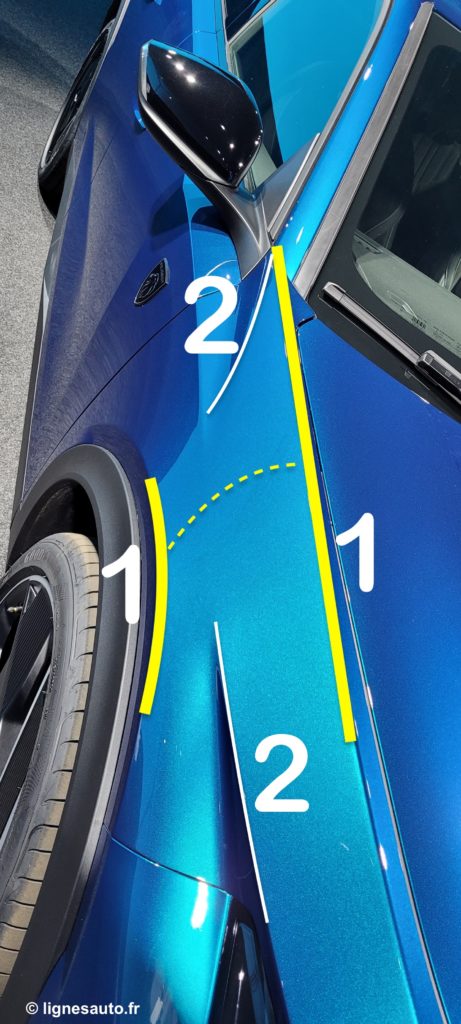

Pierre-Paul Mattei
“You don’t realise that with this vehicle, you are really dealing with an unusual object, that’s why sometimes we have overexpressed the style.
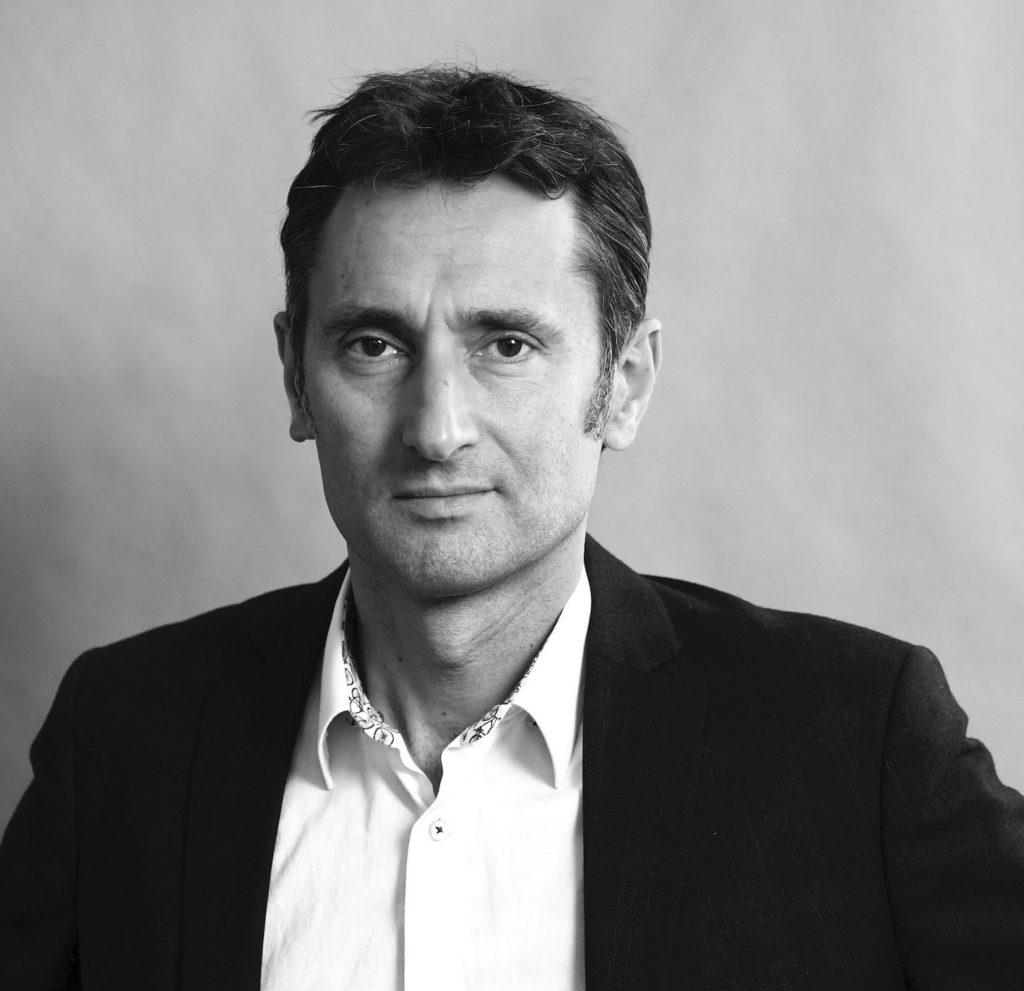
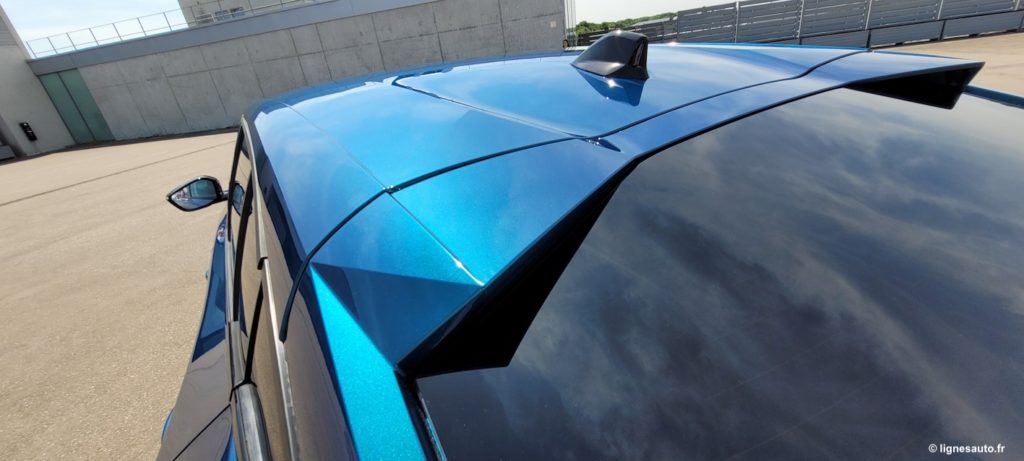
What has the 408 retained from the 308 from the same programme? Its windscreen, its headlights, as well as all the technology and waterproofing of the “front door entry”. What is this? It is the space offered to the boarders at the front doors. The seals, the shape and the cut-out of this entrance and the whole sealing study (long and tedious to develop) are identical on the 308 and 408. But obviously, on the 408, the posture is a little higher (large wheels) and above all, the exterior sheet metal is specific
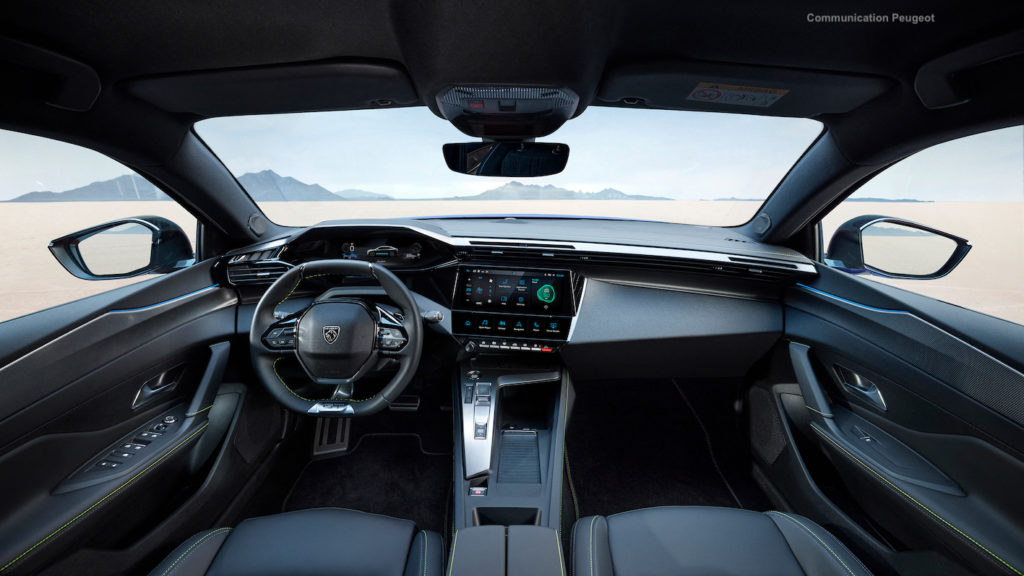
On the other hand, the dashboard is identical to that of the 308 and 308 SW. However, Pierre-Paul Mattei specifies that “it was first designed for the 408 because of the three silhouettes (308 saloon, 308 SW estate and 408) it was the 408 that was the most disruptive and unexpected. It was absolutely essential that the dashboard matched it, and only then did we make the styling adjustments so that the dashboard was compatible with the 308, which explains why the design on the 308 is quite sharp.”
Front bumper-wing junction: why doesn’t Peugeot do a “Mercedes”?
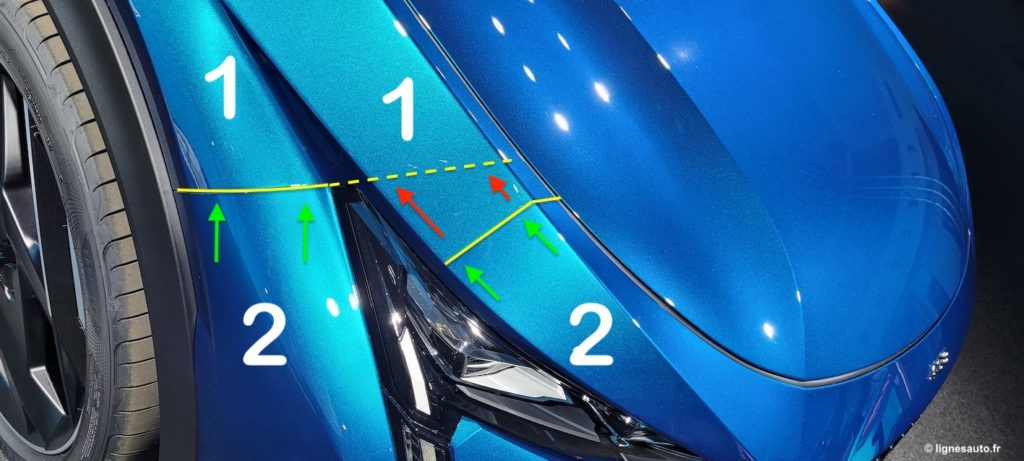
On a modular platform, Peugeot has therefore designed three different silhouettes, including the 408, which is VERY different. It is therefore worth remembering that this car was not added to the programme along the way. “It would not have been possible. As soon as the phase was brought forward, we thought of a technical community with the other cars. This means that the cars have an influence on each other.” Adding the 408 along the way would have resulted in a product that was levelled down, by taking parts that were not intended for its morphology. Pierre-Paul Mattei confirms that “we are obliged to have a precise idea of the morphologies and technical construction of the cars in order to define the communities and be able to launch the programme, and therefore the style.
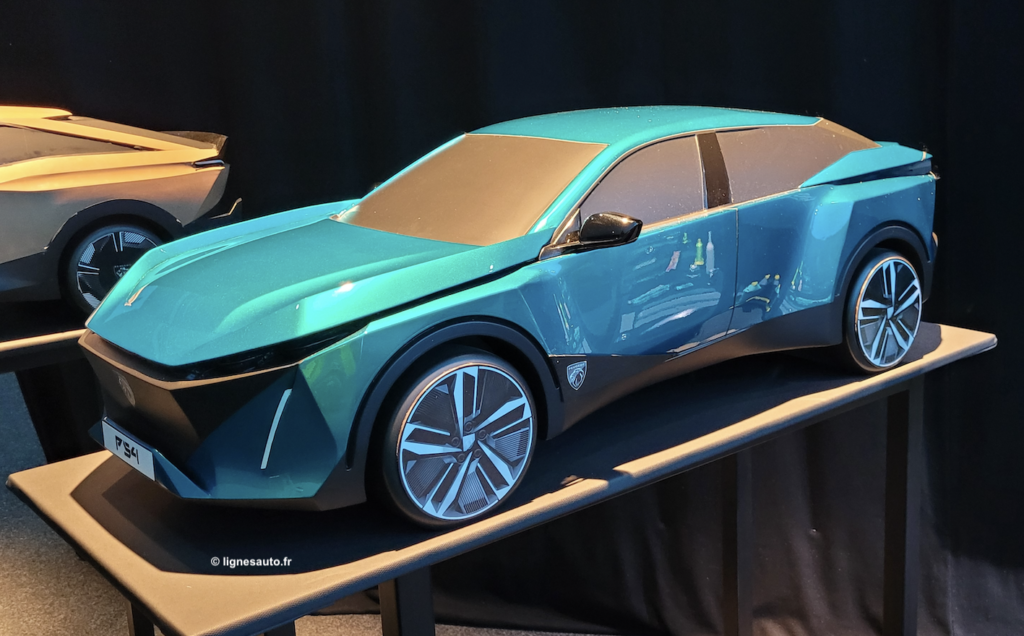
However, the 308 saloon is marketed one year before the 408. Is this time difference linked to any difficulty? “No, this delay is not the same as the one we experienced in terms of style, because we anticipated the work on the 408 precisely in order to define these communities, and above all, to adjust the cursor on the dashboard. It is important to understand that the 408 was a more complicated project compared to the 308 saloon. For the latter, we replaced a morphology that we had mastered and for which we knew the solutions: we wanted a more upmarket 308 and we gave it a morphology with a receding windscreen pillar and a longer bonnet, but despite everything, it remains a saloon in the ‘C’ segment.”
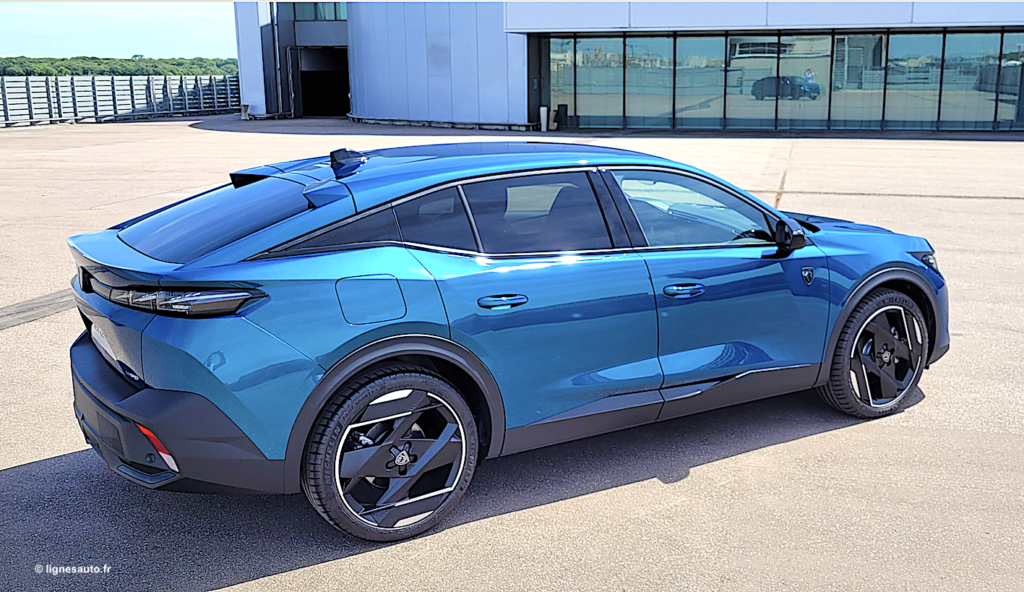
“With the 408, we are inaugurating a completely new silhouette, something new in style with curved muscles without edges. The style of the 408 and its formal language are specific. We don’t really have a word to describe this silhouette! It’s not an SUV. It doesn’t have the height and, more importantly, the driving position. Here you are in the position of a sports sedan, which you can’t get with an SUV coupe where you sit higher and straighter. As for the rear, you’ll never see a sedan with fenders that come up so high on the side!”
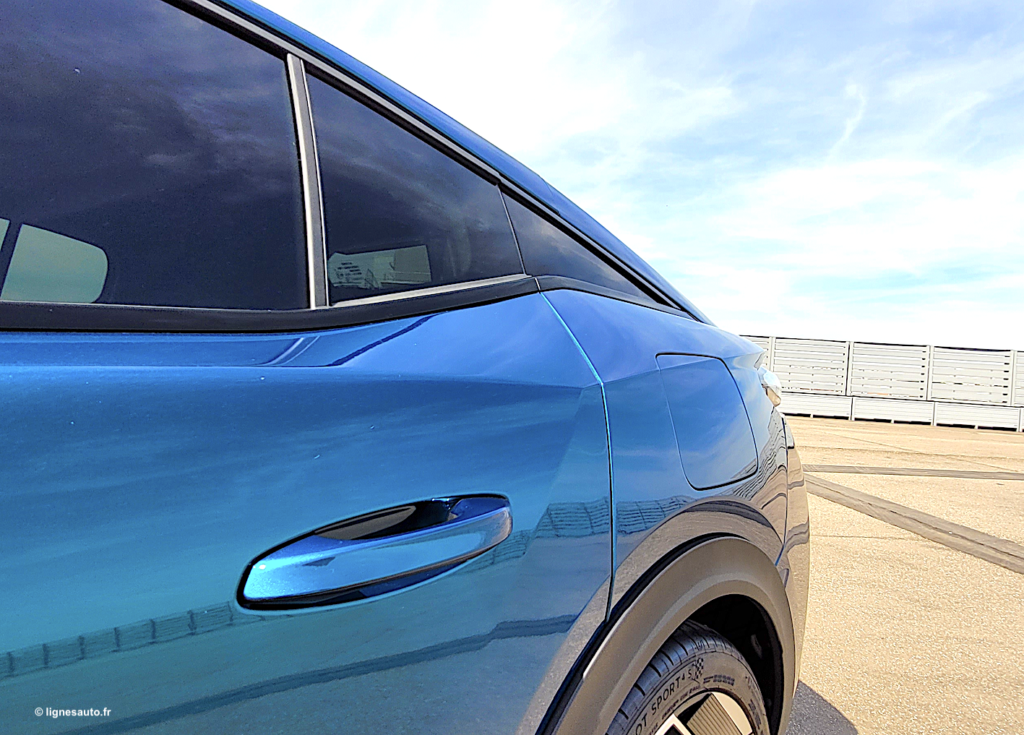
The new design language of the 408 does not shy away from curves, despite the very sharp spirit of its design. The proof is in the picture, on the upper part of the side:
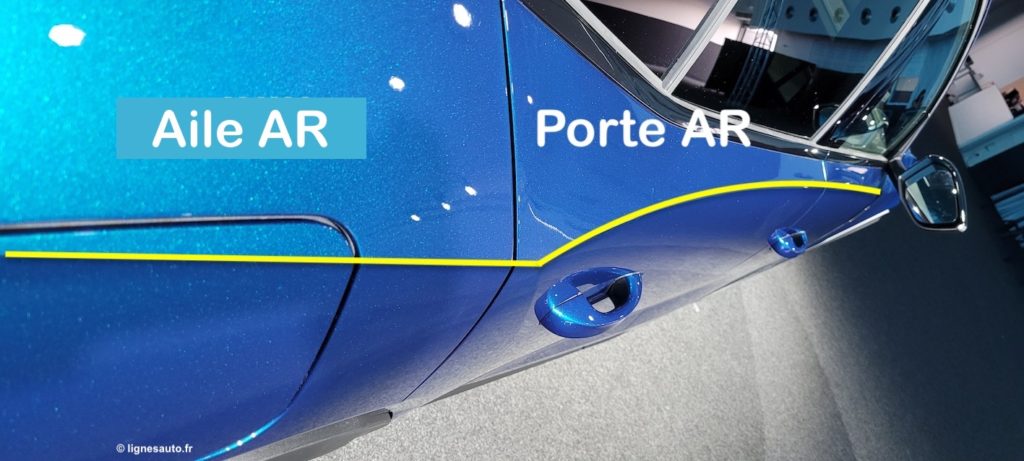
MAIN FEATURES OF THE PEUGEOT 408: length 4.69 m, wheelbase 2.79 m, width 1.85 m, height 1.48 m, boot of 536 l, Cx of 0.28, 130 bhp PureTech petrol engine, two plug-in hybrid engines of 180 and 225 bhp. No diesel. All-electric variant available after launch in early 2023.
To buy our quarterly design magazines, our beautiful books and our “automotive chronicles”, go to: https://lignesautoeditions.fr

